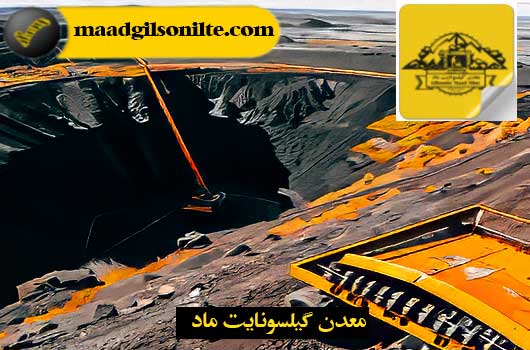
Gilsonite min exploration methods : Gilsonite, also known as uintaite, is a unique natural resource that is valuable due to its high carbon content and its diverse applications in various industries. Gilsonite exploration and mining requires a strategic approach that integrates geological mapping, advanced exploration techniques and comprehensive data analysis. On this page of Gilsonite blog from the Zagros mine steel mine complex, it discusses the methods and processes involved in the exploration of Gilsonite mine and explains the key steps from preliminary geological investigation to economic feasibility analysis. By understanding the complexities of gilsonite exploration, mining companies can optimize their operations and maximize the extraction of this valuable resource.
A wonderful world lies beneath our feet, full of hidden treasures waiting to be discovered. One such wonder is gilsonite, a shiny, black natural asphalt found in select areas around the world. Its unique properties have made it a sought-after commodity in various industries, from construction to energy.For advice, contact us using one of the communication methods listed on the Maad website home page.
Gilsonite, also known as uintaite, is a shiny, brittle, black subbituminous asphaltite. It is mainly composed of hydrocarbons and has exceptional properties such as high melting point, low ash content and excellent adhesion. These properties make gilsonite a valuable material in the production of coatings, asphalt mixtures and even ink.
Exploration is the heartbeat of Gilsonite mining. It involves a detailed process to discover potential reserves, assess their viability and determine the best methods for extraction. Through exploration, mining companies can assess the quality and quantity of gilsonite reserves, which is essential for planning sustainable mining operations.
Before digging deep into Gilsonite deposits, miners must first understand the geological landscape that hosts this valuable resource. Geological investigation and data collection paves the way for informed decision making and efficient mining processes.
Geological mapping includes the identification and depiction of rock formations, structures and mineralization processes in the target area. This visual representation helps geologists interpret the geology of the area and identify potential gilsonite-bearing formations for further exploration.
Core logging is a practice in which cylindrical rock samples or cores extracted from a drill are analyzed for mineral content, texture, and other relevant characteristics. By accurately recording and analyzing core samples, geologists can gain insight into the nature of the gilsonite deposit and aid in resource estimation and mine planning.
Gilsonite prospecting techniques and geology as compasses guide miners to buried Gilsonite treasure. From surface mapping to geophysical surveys, each method plays a vital role in uncovering the secrets hidden beneath the earth’s surface.
Surface geological mapping is one of the Gilsonite mine exploration methods carried out in Gilsonite mud mining projects and operations, which involves the study of rock formations and exposed structures above the surface of the earth to infer what lies below. By carefully examining surface features, geologists can extrapolate subsurface geology and help map potential gilsonite deposits for further investigation.
Geophysical surveys use various technologies to measure the physical properties of rocks and detect anomalies that indicate mineralization. Through methods such as electromagnetic surveys and ground-penetrating radars, geophysicists can identify potential gilsonite-bearing structures that are hidden from plain view.
Geochemical sampling involves collecting and analyzing soil, water, and rock samples to identify minerals such as gilsonite. By studying the chemical composition of these samples, geologists can pinpoint areas of high asphaltite concentration and direct further exploration efforts.
When signs point to a promising gilsonite reserve, it’s time to literally dig deeper. Drilling and core sampling are essential steps in confirming the presence and characteristics of the asphaltite reservoir and provide the basis for efficient extraction.
Drilling techniques are another method of Gilsonite mine exploration, which are different based on geological conditions and desired penetration depth. Methods such as diamond core drilling and rotary drilling are commonly used to extract core samples from different layers, which provide valuable insight into the composition and quality of gilsonite deposits.
After retrieving core samples from the depths of the earth, the next step is to examine and analyze these geological treasures. Through careful examination and laboratory testing, geologists can uncover the secrets of core samples, confirm the presence of gilsonite, and estimate mineable quantities.
Seismic surveys are like gently tapping the ground on the shoulders to see how it reacts. By sending shock waves deep into the earth and recording the echoes that bounce back, geologists can create detailed images of the underground structures where natural gilsonite is hidden. It’s like spilling the earth’s secrets into the earth by whispering sweet nothings.
Think of aerial and satellite remote sensing as an advanced version of the game of detective from the sky. By taking images from above, researchers can detect subtle changes in vegetation or terrain that may point to hidden Gilsonite treasures.
The forecasting model is another method of Gilsonite exploration, which we have provided a complete description of in the article on the exploration of natural bitumen in Gilangarb using the forecasting model.
Navigating environmental regulations is like trying to salsa dance in a minefield—one wrong move, and the whole thing can explode. Evaluating the environmental impact of gilsonite exploration is critical in designing an open pit natural bitumen mine to keep on the right side of the law and ensure Mother Nature is no match.
Mitigation strategies are like a safety net for when things get a little too wild. From reclamation plans to pollution control measures, having a playbook for minimizing environmental impact is key to ensuring that Gilsonite exploration doesn’t leave behind a messy trail.
Estimating the costs of Gilsonite exploration is like trying to predict your shopping bill before you enter the facility – it’s all fun and games until the numbers start adding up. From equipment and labor to unexpected surprises, understanding the financial side of things is essential to ensure the entire investment doesn’t turn into a money pit.
Analyzing the market for gilsonite is like trying to read the tea leaves of the global economy – difficult but very rewarding if you get it right. Understanding demand, pricing trends and potential competitors is critical to making an informed decision about whether diving into the Gilsonite play is a smart move.
In the whirlwind of seismic surveys, environmental assessments and economic analyses, one thing is clear – Gilsonite exploration is not for the faint of heart. But with the right tools and strategies, discovering this black gold can be a rewarding journey full of challenges and victories.
As we say goodbye to the current expedition, it is time to put our vision on the horizon and think about what lies ahead. From refining exploration techniques to increased environmental monitoring, the future of gilsonite exploration is ripe for those daring enough to pursue this elusive mineral. Technology and Environmental Considerations By following thorough exploration methods and conducting economic feasibility assessments, mining companies can effectively solve the challenges of gilsonite extraction while minimizing environmental impacts and maximizing economic returns. Looking ahead, continued innovation and sustainable practices in the future of gilsonite mining will be essential to ensure the responsible extraction and use of this valuable natural resource.

